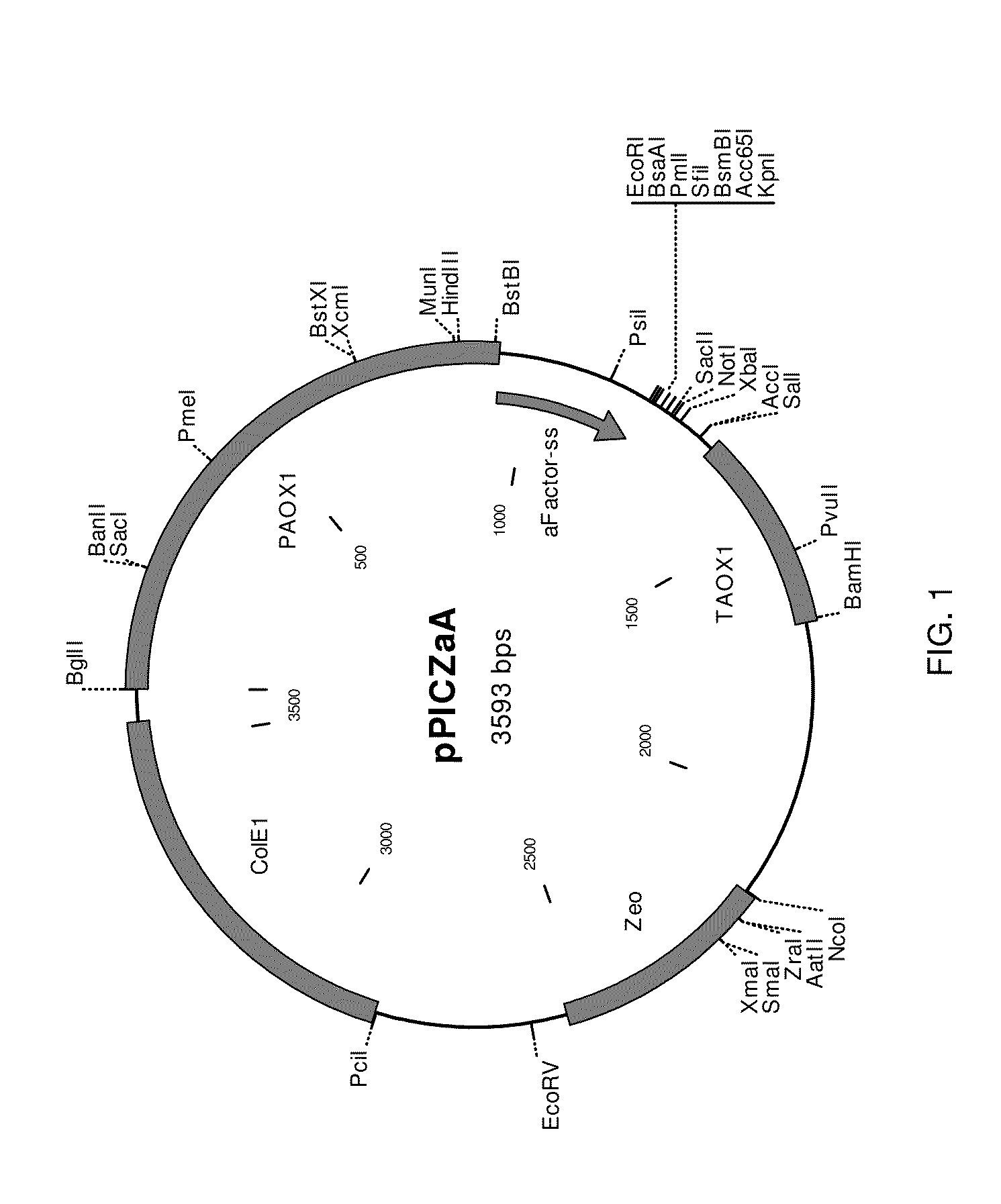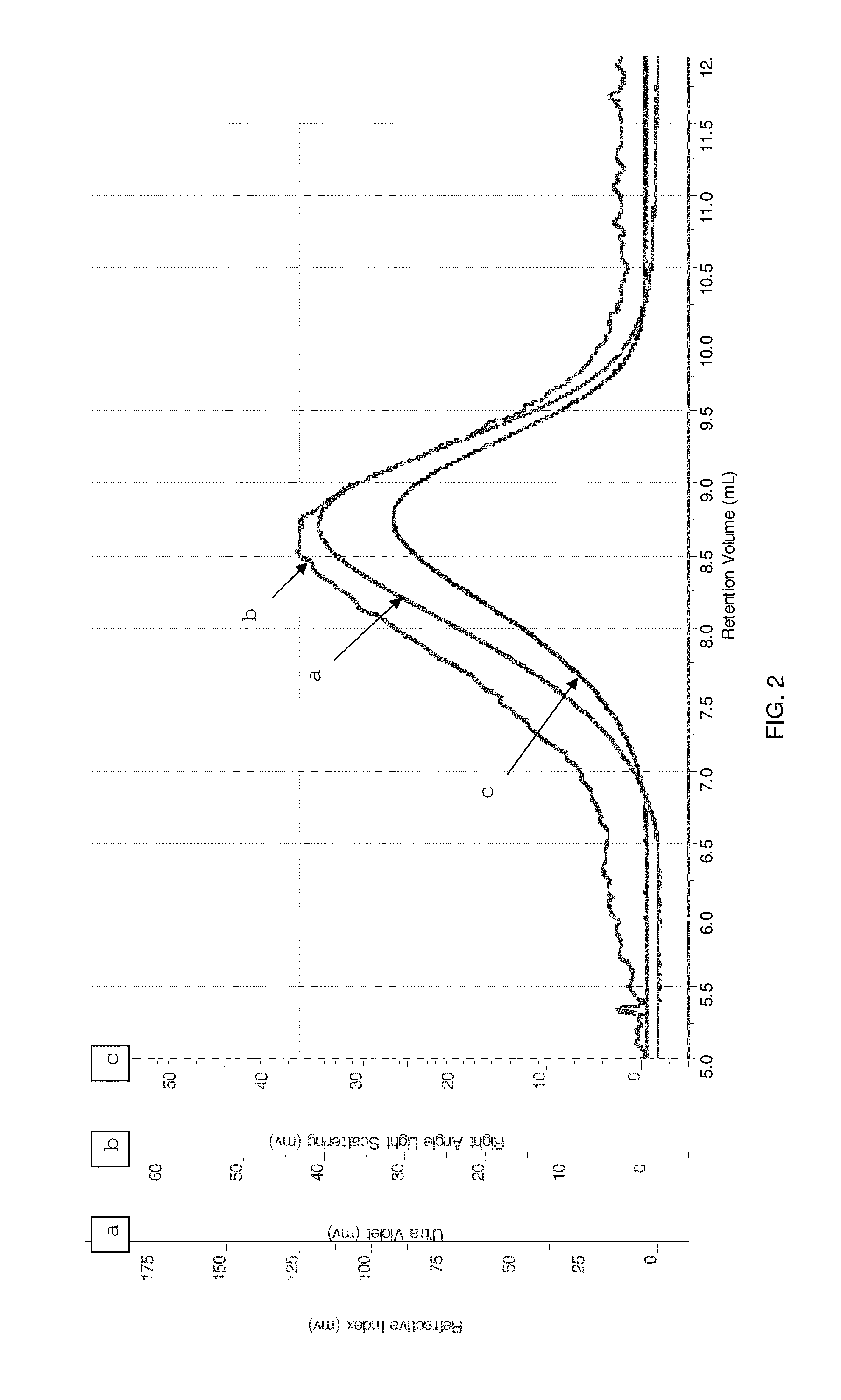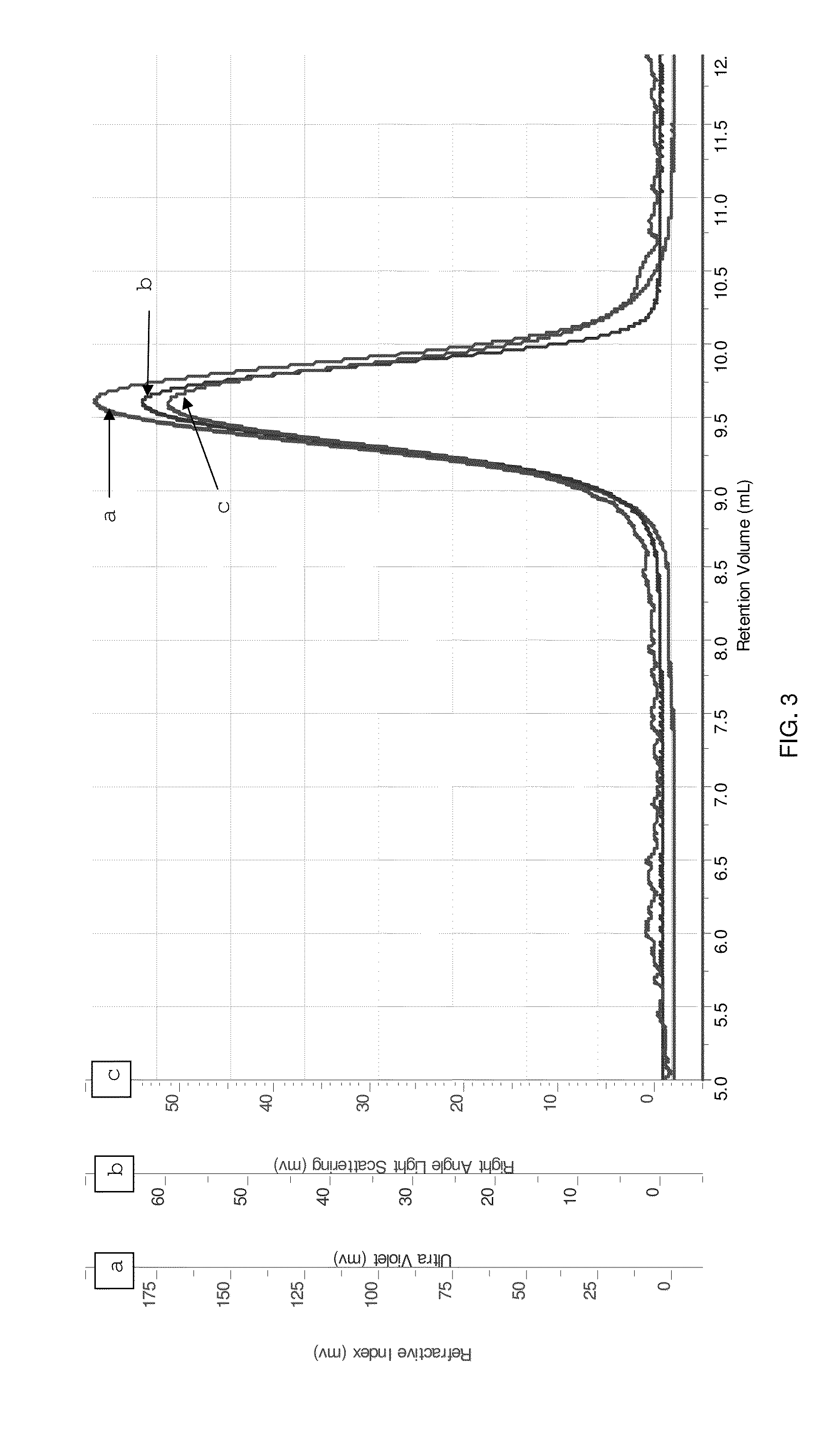Glycosylated modified flavin adenine dinucleotide-dependent glucose dehydrogenases, compositions thereof as well as methods of making and using the same
a technology of glucose dehydrogenase and which is applied in the field of glycosylated modified flavin adenine dinucleotide-dependent glucose dehydrogenase, can solve the problems of deteriorating the accuracy of measurement values, poor stability of nad(p)-dependent glucose dehydrogenase, and adverse effects on measured values of dissolved oxygen
- Summary
- Abstract
- Description
- Claims
- Application Information
AI Technical Summary
Benefits of technology
Problems solved by technology
Method used
Image
Examples
example 1
Expression of Glycosylated, Modified FAD-GDHs
[0129]To generate suitable vectors for recombinantly expressing FAD-GDH variants in P. pastoris, the synthetic FAD-GDH wild-type gene (SEQ ID NO:7) was ligated into a derivative of plasmid pBluescript SK (Stratagene; La Jolla, Calif.).
[0130]In a first step, an intrinsic recognition site for restriction endonuclease XhoI was eliminated by a silent mutation by using a Quick Change II site-directed mutagenesis kit (Stratagene) and primers (SEQ ID NOS:8 and 9) resulting in SEQ ID NO:10.
[0131]This construct was used as a template to add flanking sequences including an XhoI site at the 5′-end and an AgeI site at the 3′-end by PCR amplification using PCR primers of SEQ ID NOS:11 and 12. After amplification, the PCR product was hydrolyzed with restriction endonucleases XhoI and AgeI (New England Biolabs) and ligated into the XhoI / AgeI hydrolyzed expression vector pPICZαA (Invitrogen) resulting in a fusion gene (SEQ ID NO:13) coding for the α-fact...
example 2
Purification of Glycosylated, Modified FAD-GDHs
[0136]1 L blank filtered supernatant from the fermentation was concentrated by ultra filtration / ultra dialysis to 0.05 L and adjusted to pH 7.5 using 20 mM potassium phosphate buffer. Afterwards, the supernatant was adjusted to a 2.5 M concentration of ammonium sulfate by the addition of solid ammonium sulfate.
[0137]After incubation about 1 hour at room temperature, the solution was centrifuged and the sediment was discarded. The clear supernatant was applied to a 1000 ml phenyl sepharose column.
[0138]After washing the column with 3 L of a 20 mM potassium phosphate buffer pH 7.5 and a ammonium sulfate concentration of 2.5 M, the FAD-GDH was eluted by a linear gradient of a 20 mM potassium phosphate buffer pH 7.5 and a ammonium sulfate concentration of 2.5 M after a 20 mM potassium phosphate buffer pH 7.5 (5 L).
[0139]The fractions containing FAD-GDH were collected, purified and concentrated by ultra filtration / ultra dialysis to about 0.0...
example 3
Enzyme Activity and Sugar Specificity of Glycosylated, Modified FAD-GDHs or Active Fragments Thereof
[0140](i) Determining enzyme activity (1M D-glucose as substrate): 50 mM PIPES buffer solution pH 6.5 (including 0.1% Triton X-100), 163 mM PMS solution, 6.8 mM 2,6-dichlorophenol indophenol (DCPIP) solution, 1 M D-glucose solution, 15.6 ml of the aforementioned PIPES buffer, 0.2 ml of DCPIP solution and 4 ml of D-glucose were mixed to make the reaction agent.
[0141](ii) Determining sugar specificity (1M maltose or 1M xylose as substrate): 50 mM PIPES buffer solution pH 6.5 (including 0.1% Triton X-100), 163 mM PMS solution, 6.8 mM 2,6-dichlorophenol indophenol (DCPIP) solution, 1 M D-maltose or D-xylose solution, 15.6 ml of the aforementioned PIPES buffer, 0.2 ml of DCPIP solution and 4 ml of D-maltose or D-xylose solution were mixed to make the reaction agent.
[0142]Measurement Conditions for enzyme activity and sugar specificity: 2.9 ml of the respective reaction reagent was pre-heat...
PUM
| Property | Measurement | Unit |
|---|---|---|
| temperature stability | aaaaa | aaaaa |
| enzyme activity | aaaaa | aaaaa |
| size | aaaaa | aaaaa |
Abstract
Description
Claims
Application Information
 Login to View More
Login to View More - R&D
- Intellectual Property
- Life Sciences
- Materials
- Tech Scout
- Unparalleled Data Quality
- Higher Quality Content
- 60% Fewer Hallucinations
Browse by: Latest US Patents, China's latest patents, Technical Efficacy Thesaurus, Application Domain, Technology Topic, Popular Technical Reports.
© 2025 PatSnap. All rights reserved.Legal|Privacy policy|Modern Slavery Act Transparency Statement|Sitemap|About US| Contact US: help@patsnap.com



